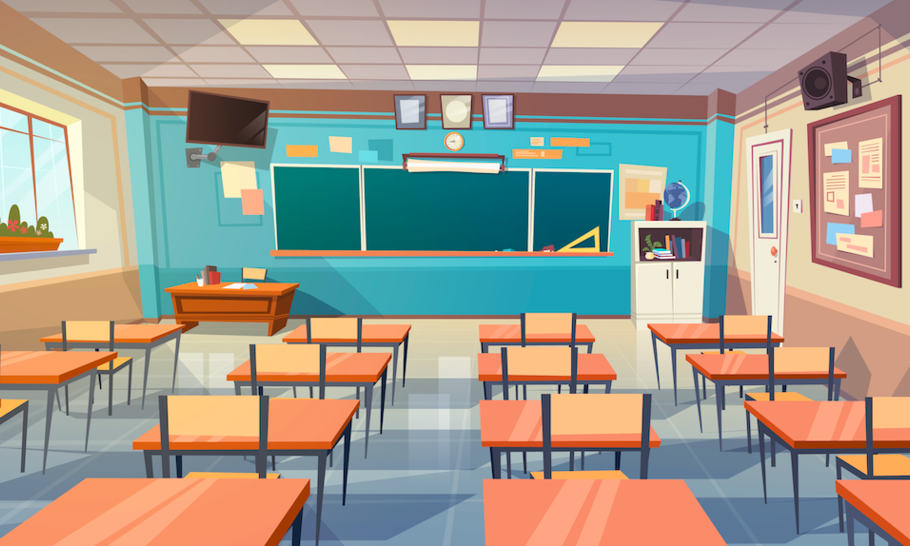Spend more on schools — but with strings attached

There were some predictably grim statistics on the public finances last week. The Government borrowed a record £127.9 billion between April and June this year. The figure meant we are just shy of two appalling milestones. The National Debt is just short of two trillion pounds — £1.98 trillion. A trillion is a thousand billion. When our National Debt reached a trillion pounds in 2011 it seemed alarmingly high at the time. Another way of measuring National Debt is relative to our annual output — at the end of last month it was 99.6 per cent, the highest debt-to-GDP ratio since March 1961.
At some stage, the severity of those figures will become apparent. But not yet it would seem. Also in the news is the announcement that almost 900,000 public sector workers are to get an above-inflation pay rise, including doctors and teachers. Earlier we learned that the Government has pledged that each secondary school will attract a minimum of £5,150 per pupil and each primary pupil a minimum of £4,000. This is up from the £5,000 and £3,750 which schools are receiving this year.
Mel Stride, the Tory MP and chairman of the Treasury Select Committee, suggests there should be some “hard decisions” around tax, given that the “public appetite for big spending cuts to reduce borrowing is limited”. The problem with tax rises is that they would be self defeating, by choking off economic growth. This would be especially likely, so far as popular tax rises are concerned — those on business and the rich. But Stride’s comments about spending cuts are too generalised. The level of support for them depends where the axe would fall. Often the polling has loaded questions, such as equating any spending reduction with “cutting public services.” Yet there are big areas of spending — on Quangos, for instance — that command little popular sympathy.
No doubt spending on schools is among the most favoured items. Parents would tend to equate higher spending with improved teaching for their children. It would be unremarkable if they then expressed support for the idea in focus groups.
Yet international comparisons suggest little correlation between spending and educational outcomes.
Vietnam has much lower school spending than the UK yet its children are well ahead of ours on academic performance. Chris McGovern of the Campaign for Real Education says: “Vietnamese pupils are 8th in the world, for example, in science. Britain does not even make it into the top 20 in any of the three areas assessed – maths, literacy and science.”
He adds: “The UK’s 900 per cent ‘real terms’ increase in expenditure on education since the 1950s has seen our comparative standards plunge dramatically compared to Vietnam and indeed to other parts of the Asia-Pacific. The top of the attainment tree these days is dominated by Shanghai, Singapore, Hong Kong, Taiwan, South Korea, Macao, and Japan. According to OECD data, by the age of 15, the children of the lowest class of manual workers in Shanghai are, in mathematics, outperforming the average pupil at our most elite private schools.” Estonia and Poland offer examples closer to home of countries that have overtaken us on results — despite being well behind on spending per pupil.
It is the teaching methods that matter. Most important is having pupils sitting in rows facing the front, each with their own desk. It might be old fashioned but it works. Often British schools favour child-centred “group learning” where several children share a table. This “progressive” approach results in slower educational progress.
So far as the costs are concerned the traditional approach would mean class sizes could be increased above 30 and classroom assistants cease to be employed. High calibre teaching would be imperative. That means that a significant pay rise for teachers would be justified. That would please the teaching unions. What they would be less keen on is that it would be performance-related — also that fewer teachers would be needed and that it would be easier to sack those who are doing a poor job.
There are other variables. A school needs to maintain order. Some may feel that smaller class sizes are the key factor. But more important is that the pupils know that disruption will not be tolerated. It is quite possible to have good discipline maintained in a class of 40 — or chaos to prevail in a class of 20.
Overall it would be possible to deliver higher standards in our schools at a lower cost. But that would mean taking some bold decisions. Simply spending more money not only risks hurtling ever faster towards national insolvency. It may well fail to deliver the improvements for our children that are promised.





